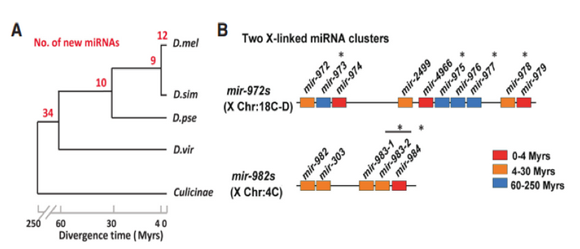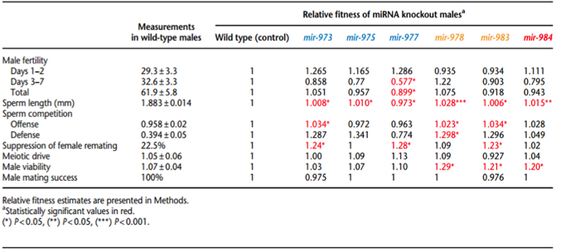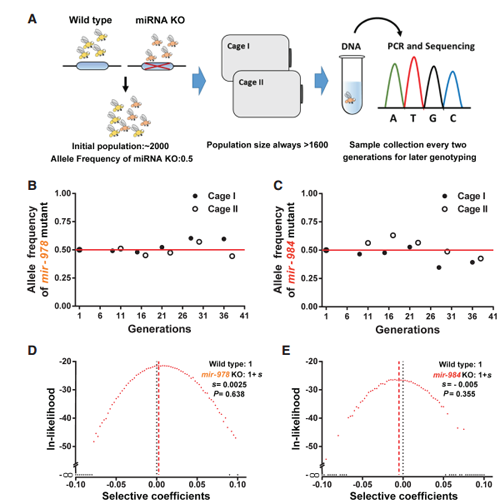Prof. Chung-I Wu’s group at School of Life Sciences reveals the ongoing period-specific adaptations of de novo new genes
Source: School of Life Sciences
Written by: School of Life Sciences
Edited by: Wang Dongmei
Prof. Chung-I Wu’s group at School of Life Sciences and State Key Laboratory of Biocontrol, Sun Yat-sen University, published a research paper entitled “Death of new microRNA genes in Drosophila via gradual loss of fitness advantages” on Genome Research (Five year IF 13.8) in September 2018, which reveals the ongoing period-specific adaptations of de novo new genes. This study focus on the origination and evolution of new genetic materials and asks the question how and why de novo genes die because gene death must be sufficiently frequent to balance the many new births. By knocking out six de novo miRNA genes (Fig.1), the researchers analyzed their contributions to the nine components of male fitness in Drosophila. Surprisingly, the knockout mutants often perform better than wild type in some components, and slightly worse in others (Table 1). When two of the younger miRNAs are assayed in long-term laboratory populations, their total fitness contributions are found to be essentially zero (Fig.2). These results collectively suggest that adaptive de novo genes die regularly, not due to the loss of functionality, but due to the canceling out of positive and negative fitness effects, which may be characterized as “quasi-neutrality” (Lu et al. 2018). In this study, Dr. Guang-An Lu was the first author; Prof. Chung-I Wu and Dr. Xu Shen were the co-corresponding authors of this paper.
This study of de novo genes has general implications. It shows that the evolution of a new function, in the form of either a gene or a phenotype, may often be “transiently adaptive.” Environmental pressures, either biotic or abiotic, may not stay constant, and the responses should not be expected to be permanent. This ever-shifting pressure to adapt is reminiscent of the metaphor of the “Red Queen” effect (Van Valen 1973). In the Red Queen landscape, adaptive evolution does not always resemble the large-scale and stable adaptive changes, for example, when terrestrial woody plants invade the intertidal habitats or mammals migrate to the high-altitude terrains (He et al. 2018). Instead, adaptations (just like de novo genes) may often be transient, small-scale, and local.
This work had got the generous help from Prof. Suhua Shi and Prof. Tian Tang at School of Life Sciences, Sun Yat-sen University. This work was supported by the National Science Fund, the National Basic Research Program (973 Program) of China, and the 985 Project.
Link to the paper: https://genome.cshlp.org/content/28/9/1309.abstract

Figure 1. Emergence of de novo miRNAs.

Table 1. Relative fitness of miRNA knockout males in different components.

Figure 2. Assay for total fitness of miRNA deletions in laboratory populations.
